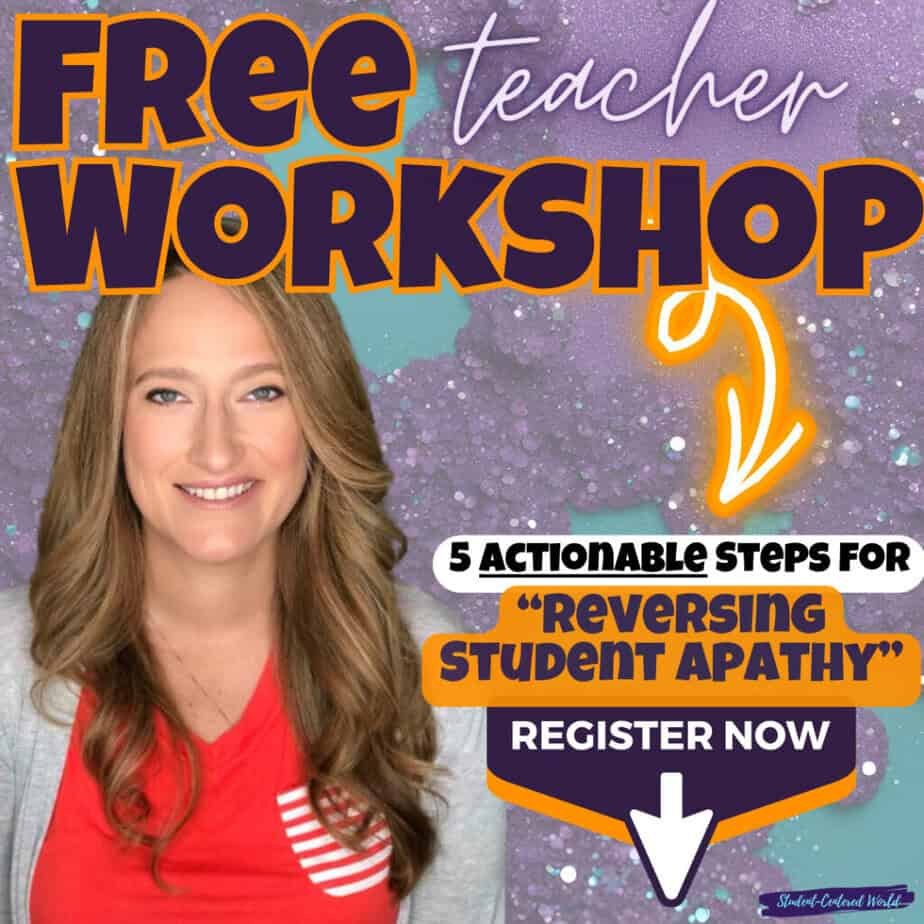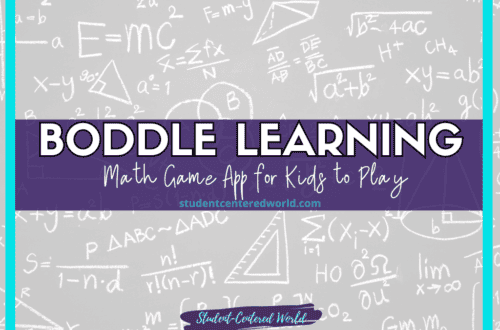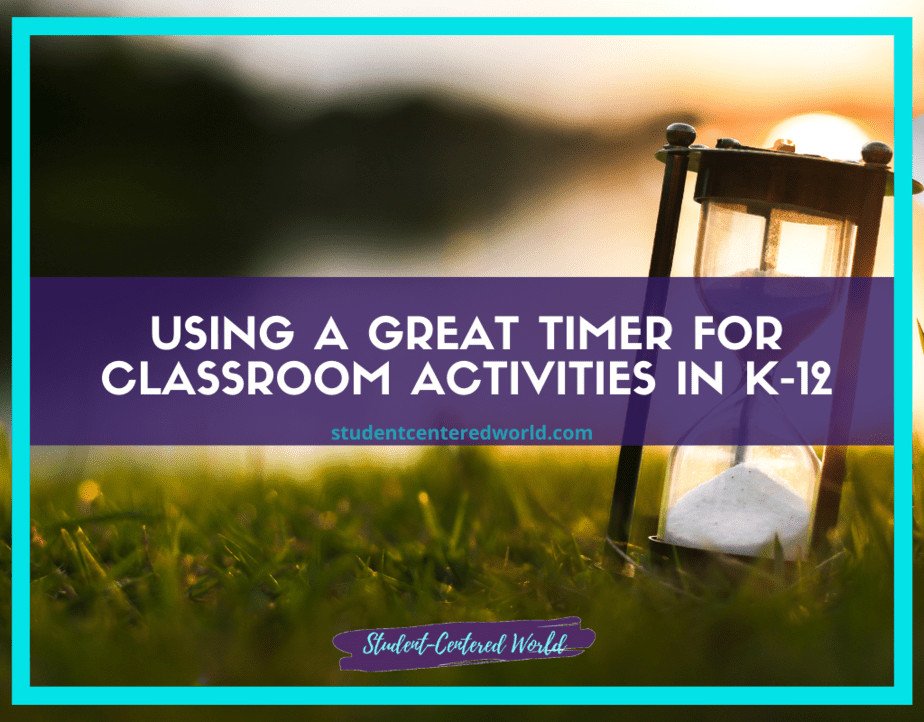Easy Tips for Teachers to Motivate Students in K-12
These days, those in education are constantly searching for tips for teachers to motivate students. The impact of COVID-19 hit our classrooms hard, and as we forge ahead while simultaneously addressing past challenges, it can feel incredibly difficult.
To help motivate students, there are foundational strategies that any teacher can implement, regardless of grade level. These strategies act like snowflakes that, when combined, can start an avalanche of student engagement and learning success.
These motivational tips are applicable whether you teach pre-K or pre-med. Finding ways to incorporate them into your classroom will reignite your passion for teaching and excite your students about learning.
First, think of teaching as performance art. Every day, you’re putting on a show for your students, who are your audience. They feed off your energy and enthusiasm—if you have it, they will too. If you seem bored or uninterested, your students will mirror that attitude, which can negatively influence their motivation and learning.
Being genuine and relatable is crucial for building positive relationships with students. If you are authentic, your students will feel more connected to you and motivated to perform well. This fosters intrinsic motivation, where students are driven by internal rewards and personal satisfaction rather than external factors.
Top tips for teachers to motivate students:
1. Be a Real Person
Creating a community where everyone feels at home, including you, is essential. If you feel out of place in your classroom, adjustments are necessary. Your room should be as zen for you as it is for your students. This is the first and most important tip because establishing a positive learning environment sets the foundation for student success.
2. Be Relaxed
Showing your students that you can remain calm and composed, even in stressful situations, helps them feel more confident and less anxious. This atmosphere of calmness encourages a growth mindset, where students believe their abilities can improve with effort.
Although stress is inevitable at times, it’s important to model healthy ways of coping. Your students look to you for guidance on how to react to challenges. If they see you handling stress positively, they will be more likely to adopt similar strategies.
3. Make Sure Your Classroom is Organized
An organized classroom can greatly influence student performance and motivation. A well-structured physical learning environment helps students feel more comfortable and focused, reducing distractions and promoting better work habits.
If students see a disorganized room, they may feel unsettled and less motivated to take their own work seriously. Keep the classroom tidy and ensure that materials are easily accessible. This shows that you value the learning process and expect the same from your students.
4. Connect with Students’ Interests
Understanding and integrating students’ interests into your lessons can significantly boost engagement. Take the time to learn what motivates them and incorporate those topics into your teaching methods. This can transform unmotivated students into enthusiastic learners.

Maintaining an open dialogue about what excites them helps create a sense of control and ownership over their learning. When students see the relevance of the subject matter to their personal interests, their motivation to engage deeply with the material increases.
5. Be the Example
Modeling the behavior and work ethic you want to see in your students is one of the most effective ways to influence their motivation. Demonstrate passion for your subject matter and show dedication in your own work. When students observe your commitment, they are more likely to emulate it.
Set high expectations and provide clear goals for your students. This helps them understand what they are working towards and gives them a sense of accomplishment when they meet those goals.
6. Effective Classroom Management
Effective classroom management is key to creating a positive learning environment. Establish clear expectations and consistent consequences for behavior. This provides students with the structure they need to focus on their learning.
When students understand the boundaries and see that you are committed to maintaining them, they feel more secure and are better able to engage in the learning process. This structured environment also allows you to implement various instructional strategies without constant disruptions.
7. Have an Open Mind
Encourage discussions that might not directly pertain to the lesson but are important to students. This approach respects their cognitive skills and interests, fostering a sense of autonomy and engagement.
Being open to students’ ideas and experiences can lead to surprising learning opportunities. It helps students see the relevance of their education to real-world applications and promotes a positive learning environment where they feel valued and heard.
8. Read Out Loud to Them
Reading aloud to students is a simple yet powerful way to engage them. It not only improves their listening skills but also demonstrates the importance of reading. This activity can be particularly beneficial for younger students and kinesthetic learners who benefit from hearing and seeing the words.
Sharing stories and discussing them can make the learning process more interactive and enjoyable. It also helps build a strong connection between you and your students, making them more motivated to participate.
9. Make the Learning Environment Comfortable
A comfortable learning environment is crucial for student engagement and success. Ensure that your classroom is inviting and conducive to learning. This includes having comfortable seating, good lighting, and a layout that supports various activities.
Flexible seating options can cater to different learning styles and preferences, making students feel more at ease. A comfortable environment shows students that you care about their well-being and are committed to providing the best possible learning experience.
10. Laugh with Them
Incorporating humor into your teaching can make learning more enjoyable and reduce stress. Laughing with your students fosters a positive relationship and makes the classroom a more welcoming place.
Humor can also be an effective way to reinforce learning. Sharing funny stories or jokes related to the subject matter can help students remember concepts better. This positive reinforcement creates a memorable learning experience and motivates students to stay engaged.
11. Show Them That Learning Can Be Fun
Learning doesn’t have to be boring. There are countless creative ways to make lessons engaging and enjoyable. Incorporate games, interactive activities, and hands-on projects to bring the material to life.
For example, if you’re teaching a foreign language course, you could use role-playing activities or invite guest speakers to make the lessons more dynamic. Field trips and real-world applications of classroom content can also make learning more relevant and exciting.
12. Use Technology
Incorporating technology into your teaching can enhance student engagement and motivation. Use educational apps, interactive whiteboards, and online resources to create a more dynamic learning experience. Technology can also facilitate formative assessments, providing immediate feedback that helps students track their progress and stay motivated.

Allow students to use their own devices for certain activities, giving them a sense of control and autonomy over their learning. This can be a great way to integrate their personal interests with the curriculum.
13. Give Constructive Feedback
Providing specific and constructive feedback is essential for student growth. Highlight their strengths and offer guidance on areas for improvement. Positive feedback can boost their confidence, while constructive criticism helps them understand how to enhance their skills.
Use a variety of ways to give feedback, such as written comments, one-on-one discussions, or digital platforms. This personalized approach shows students that you are invested in their success and motivates them to strive for their best work.
14. Encourage Intrinsic Motivation
While extrinsic motivation (such as grades and rewards) can be effective, fostering intrinsic motivation is key to long-term student engagement. Help students find personal meaning and satisfaction in their learning. This can be achieved by connecting the material to their interests, setting achievable goals, and celebrating their progress.
Encourage a growth mindset, where students see challenges as opportunities to learn and grow. This mindset shift can transform their approach to learning and motivate them to persist through difficulties.
15. Design Assignments with Real-World Applications
Creating assignments that have real-world relevance can significantly increase student motivation. When students see how the material applies to their lives outside of school, they are more likely to engage deeply with it.

Use case studies, project-based learning, and other instructional strategies that connect classroom content to real-life scenarios. This approach not only makes learning more interesting but also helps students develop practical skills that are valuable in their future careers.
16. Offer Choices
Giving students options in their learning activities can enhance their sense of control and motivation. Allow them to choose topics for projects, select from different types of assignments, or decide how they will present their work.
This autonomy supports the self-determination theory, which suggests that people are more motivated when they feel they have control over their actions. Providing choices also caters to diverse learning styles and preferences, making the learning experience more personalized and effective.
17. Highlight Student Progress
Regularly acknowledging and celebrating student progress is a powerful motivator. Use vision boards, progress charts, and verbal praise to highlight their achievements. This recognition reinforces their hard work and encourages them to continue striving for excellence.
Tracking progress through formative assessments and providing tangible rewards for milestones can also boost motivation. This positive reinforcement helps students see the value of their efforts and fosters a sense of accomplishment.
Conclusion
Motivating students requires a multifaceted approach that combines various teaching methods, classroom management strategies, and personal connections. By being authentic, organized, and responsive to students’ interests, teachers can create a positive learning environment that fosters both intrinsic and extrinsic motivation. Emphasizing real-world applications, providing constructive feedback, and offering choices can significantly enhance student engagement and performance.
Ultimately, the goal is to cultivate a classroom atmosphere where students feel valued, motivated, and empowered to achieve their best.
Stop Driving the Teacher Struggle Bus
Are you struggling with student engagement, apathy, or keeping your class on track?
💫💫 There’s hope! 💫💫
If you’re ready to take the first step towards reviving student engagement and transforming your classroom, I invite you to join me for my free workshop “Reversing Student Apathy” designed to equip educators with innovative strategies that work.
This free teacher workshop offers educators a valuable opportunity to explore and address student apathy. By examining its causes and discussing strategies, participants will learn how to make meaningful changes in their teaching methods that are actually working. The sessions are engaging and collaborative, allowing educators to share experiences and develop a collective approach to improving student engagement.
Highlights include:
- Understanding the roots of student apathy and its impact.
- Strategies for enhancing classroom dynamics.
- The importance of educator-student relationships.
- Innovative teaching approaches for today’s students.
By the end of the workshop, you will not only understand what you need to accomplish to stabilize the 4 pillars of your classroom, but you will also walk away with 5 tangible ideas to try in the classroom the very next day.
Join today to be part of the solution to reigniting student enthusiasm and engagement.
This article was originally published on November 3, 2021






